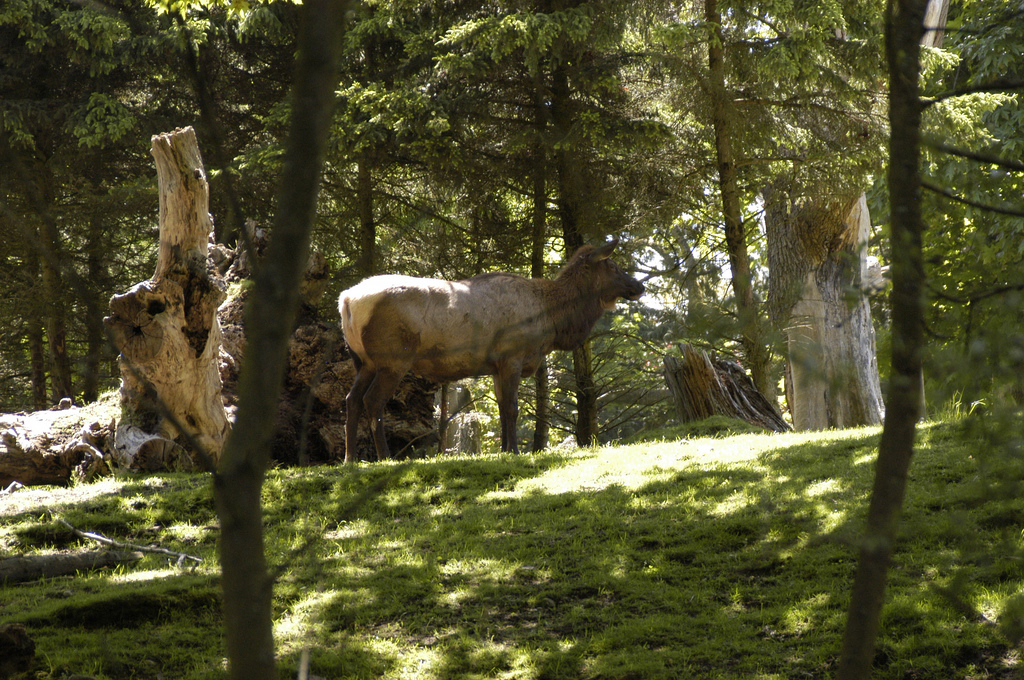The federal government is asking Canadians what they think
about its proposed strategy to prevent threatened woodland
caribou from continuing down the path to extinction. It’s
timely to ask why are caribou in trouble in Manitoba and
across the nation? How is ensuring that caribou’s boreal forest
home is healthy essential to humans and all life? What needs
to be done to protect this imperiled icon of our great Canadian
wilderness?
In Manitoba, Boreal woodland caribou have already
disappeared from their original homelands in and around
Whiteshell and Riding Mountain Parks. Human development
is the primary cause. There is strong scientific evidence that
when large intact forests are fragmented by human
disturbances, caribou populations dwindle. These
disturbances include logging, mining, hydro transmission
corridors and associated roads, which are increasingly
spreading into even the most remote areas of the boreal forest.
Governments, First Nations, scientists, industry, and citizen
organizations are all part of a growing focus on caribou
survival. Why such a huge lens on this one species when there
are hundreds of different critters at risk? Well, if you protect
what woodland caribou need, that means you are also
protecting what people and all life require to live.
Caribou’s presence indicates the health of our country’s boreal
forests, which cleanse our air, provide fresh water, provide
habitat for millions of birds, and store vast amounts of carbon,
helping to slow global climate change. Where caribou thrive,
the ecosystem is doing well; where they have disappeared, the
forest is severely damaged and compromised.
Caribou require big intact boreal forests to find enough food
and to avoid predators. Sadly, they no longer inhabit a wide
strip of their original range in Manitoba. We need to take
serious measures to make sure boreal caribou don’t continue
their long slide into extinction. Recent large-scale wilderness
protection on the east side of Lake Winnipeg is a good
example of the kind of action that is necessary.
In examining the federal government’s proposed recovery
strategy for caribou, CPAWS has some serious concerns.
We’re pleased that the federal government properly identifies
human disturbance as a major cause of the caribou decline,
but we’re feeling uneasy about the loopholes that will allow for
the continued destruction of important boreal caribou habitat.
Some of our major concerns with the strategy include:
– It sets the bar too low for caribou’s long-term health by
assuming that a 60 per cent level of probability of survival is
adequate. The reasons for setting the probability level so low
are unexplained and leave little room for error or
unanticipated events. Imagine how concerned you would be if
a medical professional told you that your chances of surviving
a predicament were 6 out of 10. We are recommending that
the strategy require a minimum 80 per cent level of survival
probability for caribou.
It fails to set the objective of self-sustaining populations for all
woodland caribou ranges. Instead, it says self-sustaining for
certain populations, but not for populations that are most
imperiled. In Manitoba, this leaves 6 of the 11 identified
caribou ranges quite vulnerable to extensive habitat loss.
CPAWS believes that conserving enough boreal woodland
caribou habitat in Manitoba and right across the country is
possible while also ensuring a prosperous forest sector. We’re
working to achieve both goals with other conservation
organizations and forestry companies through the Canadian
Boreal Forest Agreement.
Canada’s boreal is the largest intact forest remaining on the
planet and Manitoba is in the heart of it. It’s our responsibility
to look after this globally-significant ecosystem. As part of that
responsibility, we must ensure that we look after the boreal
caribou and ensure that this iconic species always has enough
wilderness to roam.
By fixing the federal draft recovery strategy now, while there is
still time, boreal woodland caribou in Manitoba and across
Canada will have a much better chance of survival and
returning to a point where they are not threatened on the
landscape. To do that, we must be bolder when it comes to
protecting boreal caribou habitat. We must ensure that we
conserve enough interconnected wilderness for this species.
These achievements will bring us a giant leap closer to
realizing the true intention of the Species-At-Risk Act, and
ensuring a healthy future for caribou, humans, and all life on
earth.
You can help!
Ron Thiessen is the Executive Director of CPAWS. He wants to encourage you to go to http://caribouandyou.ca/ to sign the petition to protect
woodland caribou and their boreal forest home.


